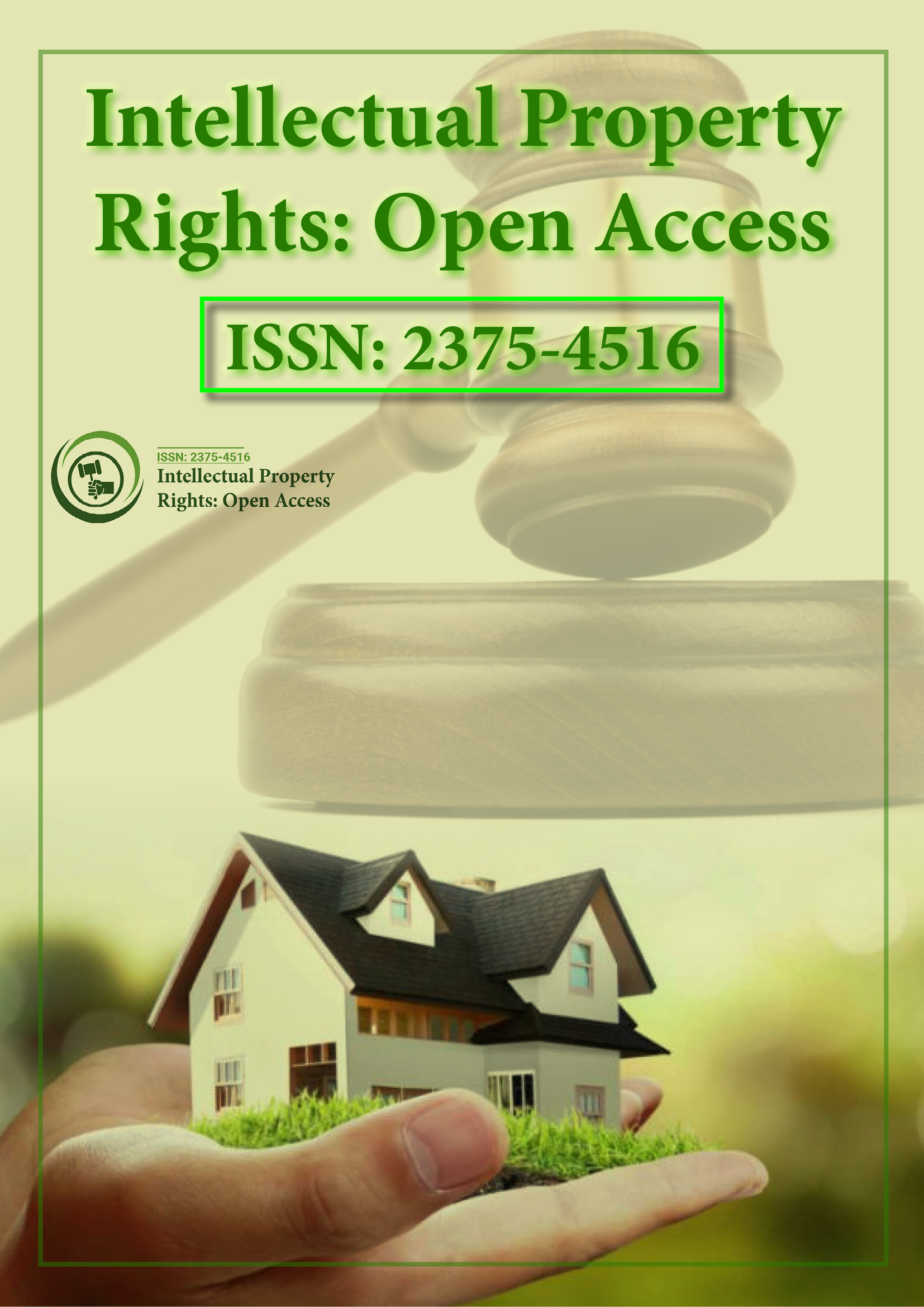Indexed In
- Open J Gate
- RefSeek
- Hamdard University
- EBSCO A-Z
- OCLC- WorldCat
- SWB online catalog
- Publons
Useful Links
Share This Page
Journal Flyer

Open Access Journals
- Agri and Aquaculture
- Biochemistry
- Bioinformatics & Systems Biology
- Business & Management
- Chemistry
- Clinical Sciences
- Engineering
- Food & Nutrition
- General Science
- Genetics & Molecular Biology
- Immunology & Microbiology
- Medical Sciences
- Neuroscience & Psychology
- Nursing & Health Care
- Pharmaceutical Sciences
Perspective - (2023) Volume 11, Issue 1
E-Commerce Law and Acts in Companies
Wang Lun*Received: 03-Mar-2023, Manuscript No. IPR-23-20363; Editor assigned: 06-Mar-2023, Pre QC No. IPR-23-20363 (PQ); Reviewed: 22-Mar-2023, QC No. IPR-23-20363; Revised: 29-Mar-2023, Manuscript No. IPR-23-20363 (R); Published: 05-Apr-2023, DOI: 10.35248/2375-4516.23.11.218
Description
The Companies Act of 2006 was the most significant update in company law in more than 20 years. It basically de-regulates different parts of private-sector needs. The clauses on directors' obligations, on the other hand, will have an influence on all companies, though possibly more on giant CLPs than on tiny family businesses.
The following are the most affected areas:
• Directors; consequences of breach of duty and derivative claims; various laws on directors; shareholder communications; meetings; constitutional amendments
• Share capital and capital maintenance
• Company secretary and records
• Business names
• Directors' annual reports; and
• Auditors
Additional areas of focus include revising the controls on political donations and aligning the audit requirements for charitable organizations with the general standards for companies.
Electronic commerce doing business through network technology will have a big impact on the global economy and will be critical to future economic development. Currently, Europe and the United States are considered as the primary beneficiaries of such expansion, but nations such as India and China, with their vast pools of highly competent labour, have remarkable prospects. Several developing countries have pursued policies aimed at building a consistent legal and regulatory framework to allow electronic transactions across state, national, and international borders. The creation of an acceptable legal framework necessitated a significant rethinking of previous legal approaches. Many legal norms are predicated on the reality of paper records, documents, signatures, physical cash, checks, face- to-face meetings, and so on.
As more transactions are conducted electronically, it is critical that proof of these transactions be available to illustrate the resulting legal rights and duties. The Information Technology Act of India of 2000 establishes a legal framework to ensure that transactions do not lose legal effect, legality, or enforceability just because they are in electronic form. In this paper, we will discuss the economic impact of e-commerce on developing countries, as well as the major provisions of the Information and Technology Act of 2000 in terms of contractual, jurisdictional, security, and regulatory issues. The Act will be compared to counterparts in Europe, the United States, and South East Asia.
The Internet and e-commerce are growing at parabolic rates, with highly asymmetric worldwide distribution. There is also significant difference in the methods used to access the Internet and the e-commerce models employed around the world. This research seeks to identify and combine the available evidence on magnitude predictors, worldwide distribution, and e-commerce formats. According to the report, the twin forces of globalization and major Technology revolutions are fueling the rapid rise of global e-commerce. Economic and infrastructure variables, cultural factors, political and legal factors, and the operations of supranational agencies, on the other hand, define the share of global e-commerce that a country is likely to receive and the forms in which it is implemented.
A company's success is determined by its ability to comprehend how many environmental elements influence the optimal combination of fixed and mobile telecommunications networks in a country; the suitability of a product to be sold online; website design; payment mechanism; and delivery means.
Citation: Lun W (2023) Identification of Software Patents. Intel Prop Rights. 11:218.
Copyright: © 2023 Lun W. This is an open access article distributed under the terms of the Creative Commons Attribution License, which permits unrestricted use, distribution, and reproduction in any medium, provided the original author and source are credited.
